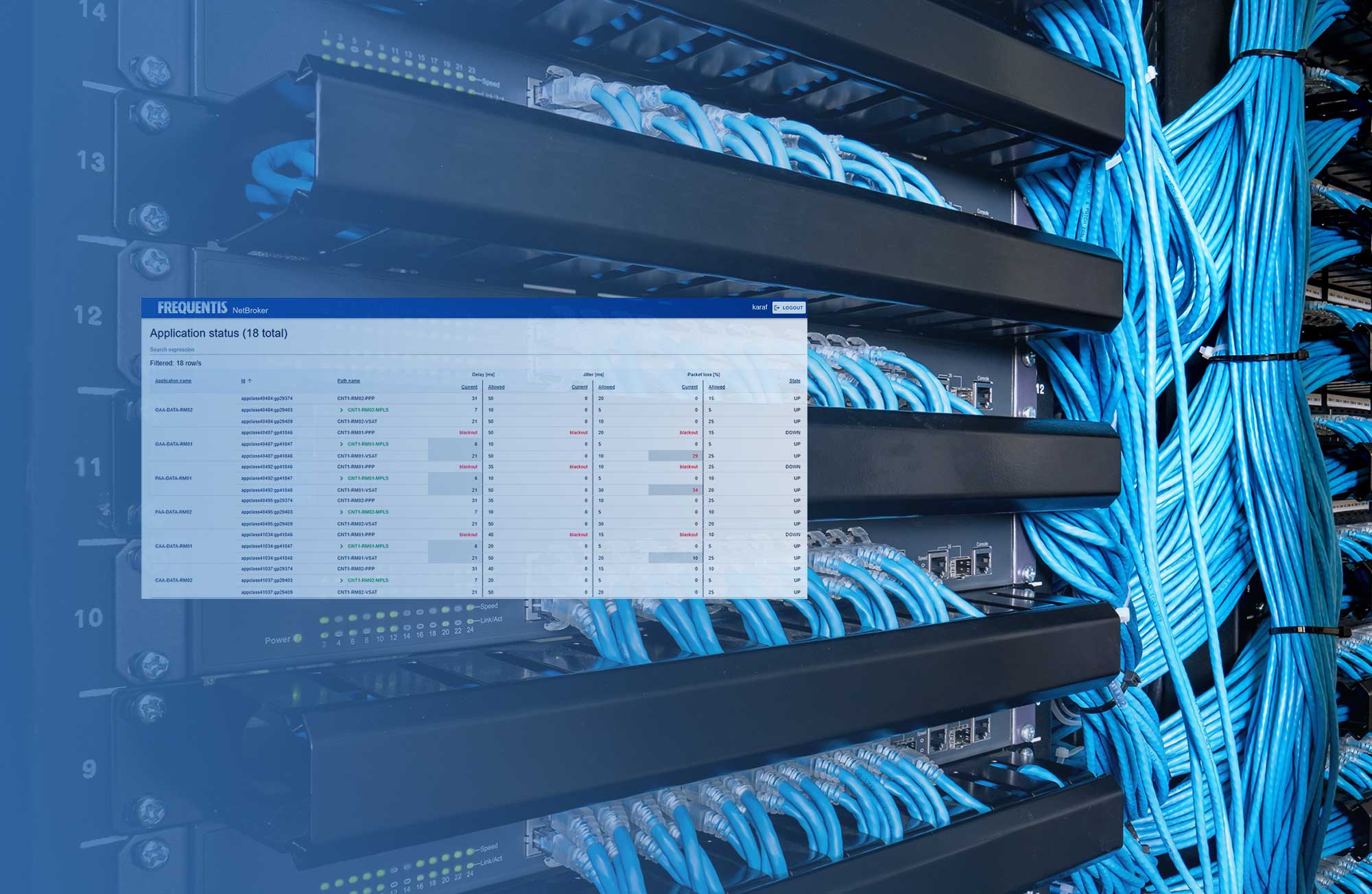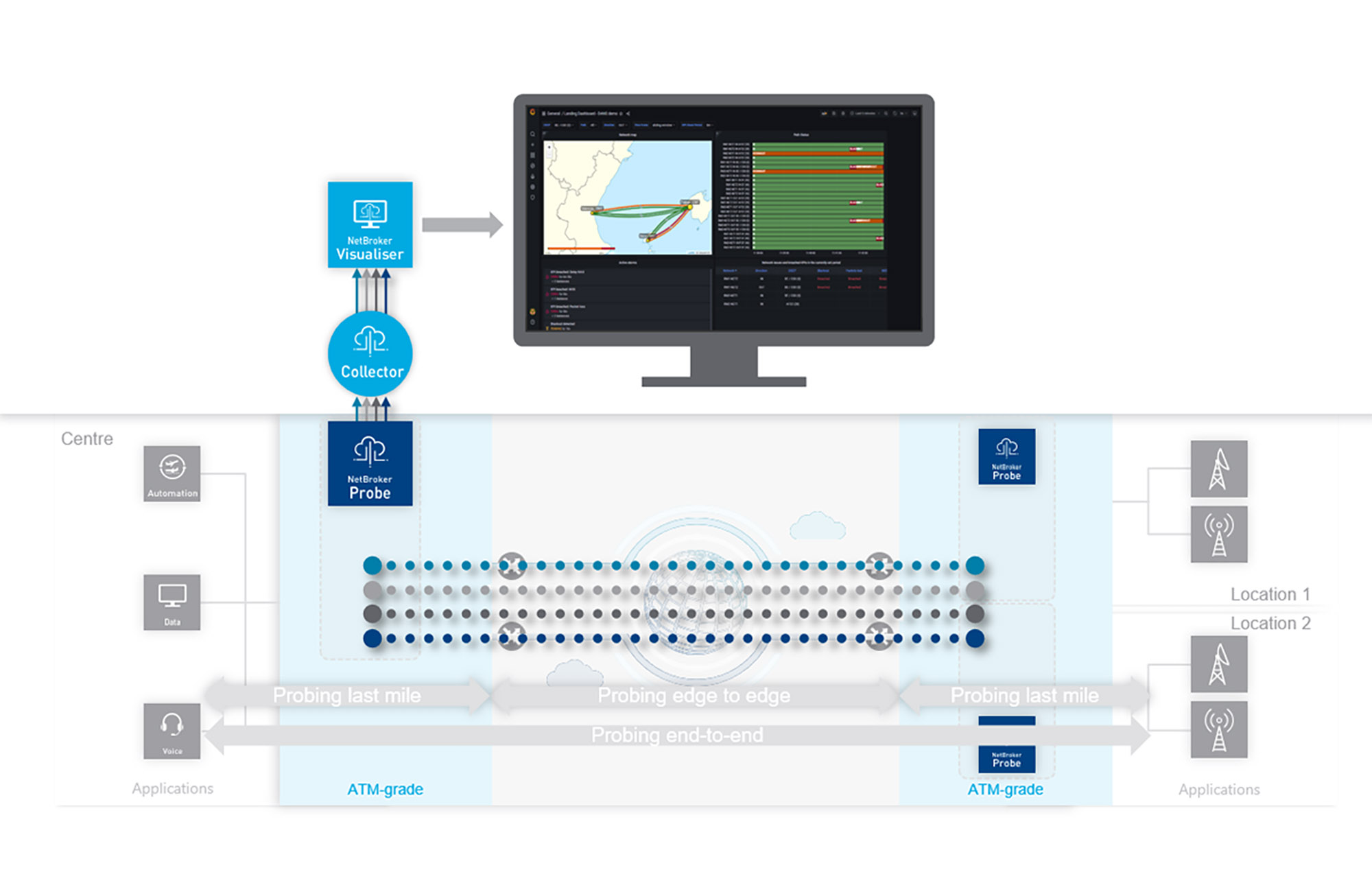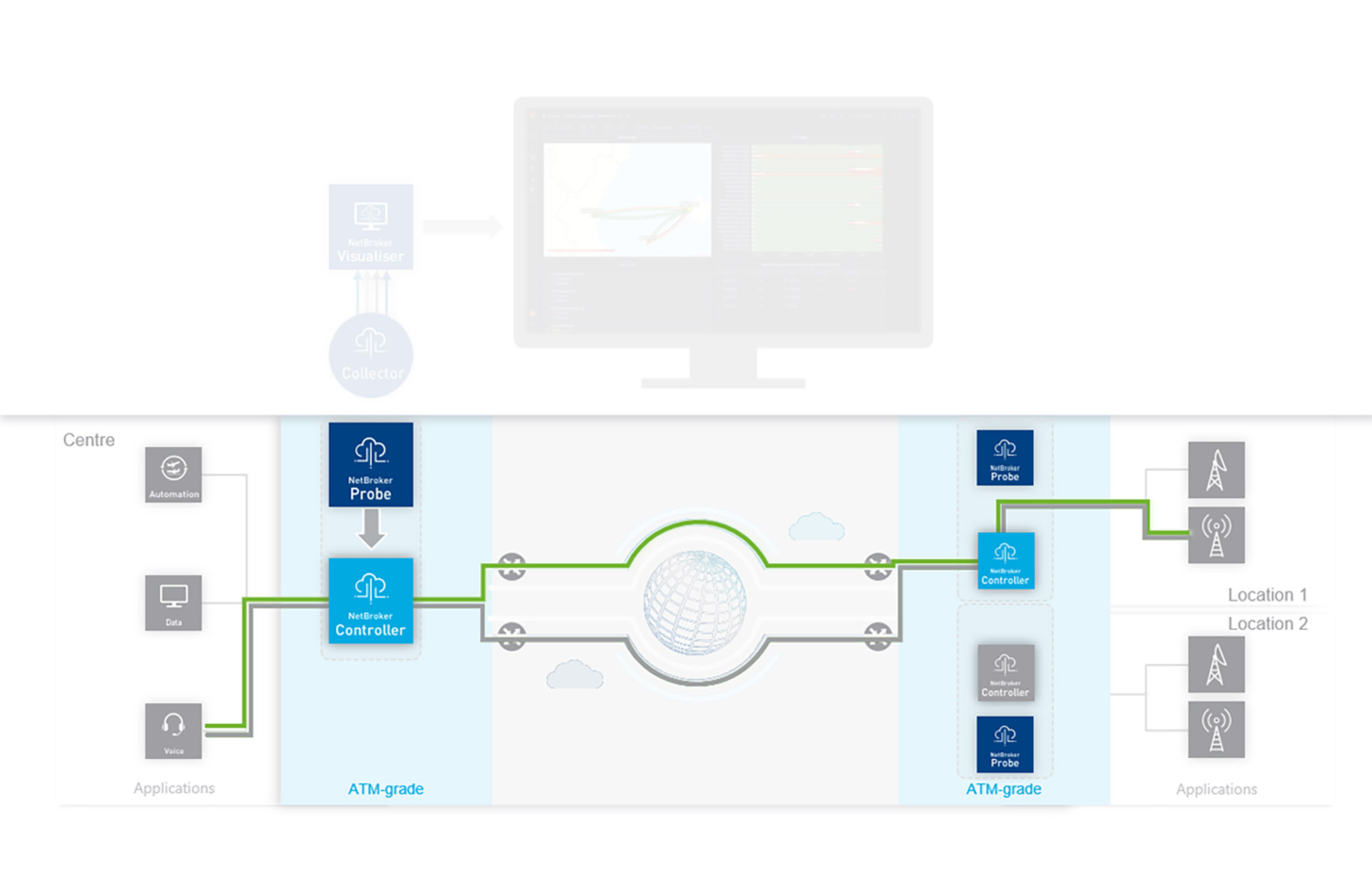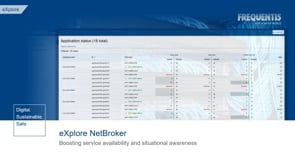
NetBroker
Boosting service availability and situational awareness
In Air Traffic Management (ATM), the network is a key element of operational safety. It carries voice, surveillance, and data services that controllers rely on every second. Any loss or delay in communication can directly affect safety and efficiency.
NetBroker ensures that data is transmitted via the most suitable network path based on real-time performance. It continuously measures network quality, reacts to degradations before they result in failures, and maintains the service levels required for ATM operations.
It is built on the principles of Software-Defined Networking (SDN) and leverages OpenFlow for policy enforcement. The following sections provide a closer look at the main functional components of NetBroker and explain how each contributes to reliable, ATM-grade network performance:
Key benefits
- Real-time end-to-end monitoring of network and service performance
- Brownout detection and proactive alarming before service degradation escalates
- Intelligent traffic steering based on live network conditions and application needs
- Duplicator for increased availability and reduced packet loss
- Modular, scalable architecture from probing to full steering and/ or duplicating
- Flexible hardware deployment on Frequentis or standard COTS infrastructure
Hardware and Deployment
NetBroker is a lightweight software solution that can operate on:
- Standard COTS servers or virtual machines
- Frequentis NetBroker hardware, designed specifically for 24/7 operation
The dedicated Frequentis hardware incorporates:
- Redundant power supply
- Dual storage
- Fanless design for increased reliability
- Compact 2U form factor (two units side-by-side for redundancy)
Probing is the foundation of NetBroker. It performs continuous, end-to-end measurement of key performance indicators such as delay, jitter, and packet loss. Rather than relying solely on external devices or edge-based monitoring, NetBroker probes the entire data path, including both WAN and LAN segments. Artificial traffic streams simulate real ATM applications such as voice or radar data. This approach makes it possible to assess the true network performance experienced by operational systems. Probing operates independently of the existing routing configuration and introduces no change to live services.

All measured values are collected and displayed in the NetBroker Visualiser. Operators can view the current network status, compare performance across multiple paths, and review historical data trends.
Typical monitoring functions include:
- Live status of each network connection
- KPI charts for delay, jitter, and packet loss
- Alarm history and threshold breaches
- Mean Opinion Score (MOS) for assessing voice quality
Monitoring supports brownout detection, identifying reduced service quality even when the link remains operational. This enables preventive action before a service interruption occurs.

The steering module uses probing data to decide which network path should carry each service. When the measured quality of a link no longer meets the defined requirements for a particular application, NetBroker automatically switches the affected traffic to an alternative path that fulfils the required thresholds. Key features include:
- Selective rerouting – only the affected traffic is redirected
- Fast reaction time – switching within a few seconds
- Automatic return to the primary path once quality recovers
- Flow whitelisting – only predefined traffic types are permitted
In situations with limited bandwidth, NetBroker supports graceful degradation, maintaining essential traffic (such as voice or primary video) while reducing or suspending less critical data flows.

The NetBroker Duplicator increases reliability by transmitting identical IP packets simultaneously over two or more independent network paths. At the receiving side, duplicate packets are discarded and the first valid packet is processed.
This function eliminates packet loss and ensures seamless service continuity, even if one connection degrades or fails. Duplication operates at the IP layer, allowing the use of completely different network providers or technologies (for example, terrestrial IP and VSAT) without requiring synchronisation between them.


